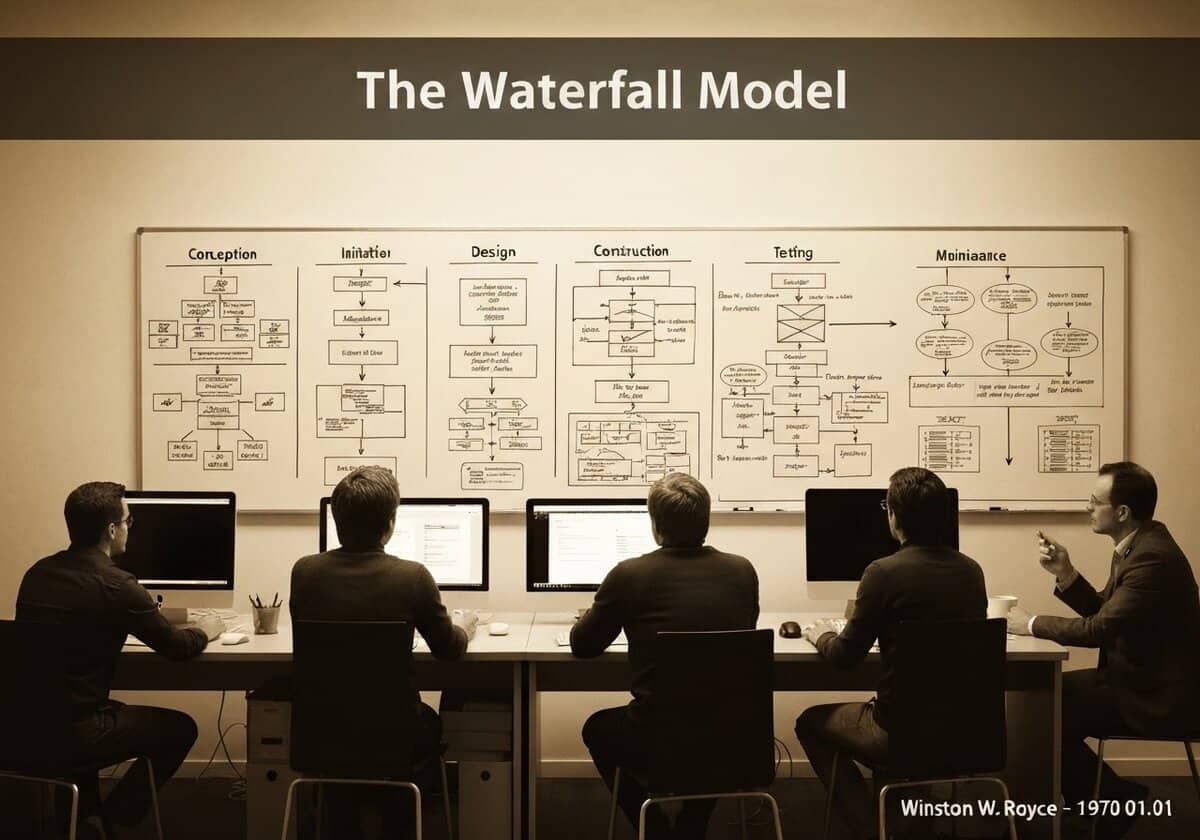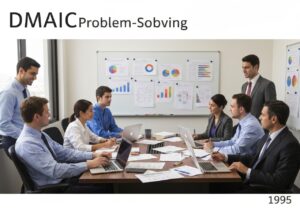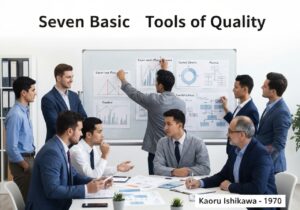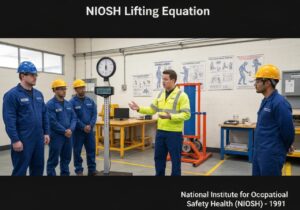The Waterfall Model is a sequential, non-iterative software development process, where progress flows steadily downwards (like a waterfall) through distinct phases: conception, initiation, analysis, design, construction, testing, deployment and maintenance. Each phase must be fully completed before moving to the next. It is often contrasted with iterative models to highlight their flexibility.

















